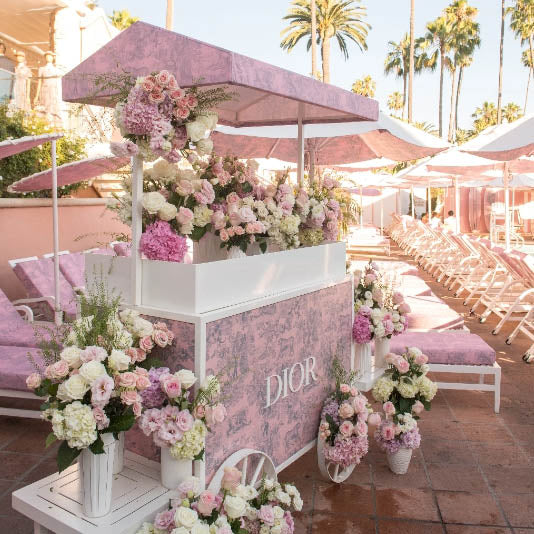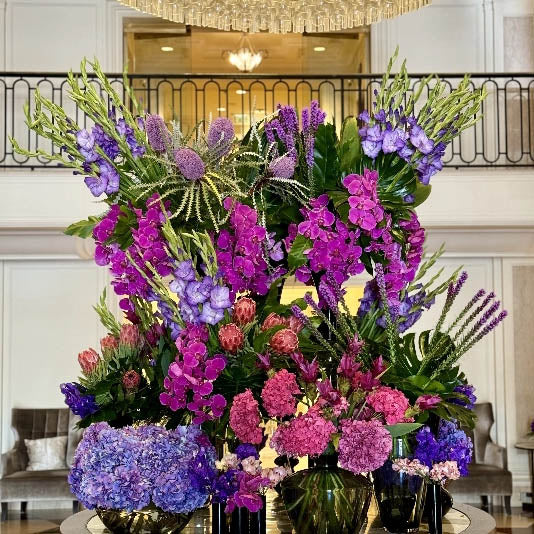
Wild About Wisteria
Wisteria is a beautiful and delicate flower that adds elegance to every season that follows each new debutante into society. We josh, of course, but when the Bridgerton Home first showcased its adorned facade in the Netflix original series, wisteria searches went up 400%! And we can't blame a single person! These beautiful vines, with their lavender blossoms and delicate, purple-tinged petals, are a favorite of gardeners worldwide. As their bloom time quickly approaches, we thought it'd be a good time to share some history and fun facts about them—and to know where you can see them in person.

The history of wisteria is long and illustrious
Native to China and Japan, this deciduous vine has been cultivated for thousands of years but was first used in China to make dyes. The Japanese subsequently discovered its beauty as an ornamental plant and began tending it for use in gardens there. Its popularity spread, and it was introduced to Europe in the 1700s and was first planted in the United States in 1816. It was named after botanist William Wister, who studied it during his travels through Japan.
In ancient China, they were used as medicinal plants, while elsewhere in history, they were grown at Versailles for fragrant decor. Napoleon planted along the roadside and around his estate, while Thomas Jefferson wrote about them extensively (and had a few growing at Monticello); they're even mentioned by Shakespeare!
Today, wisteria grows wild on trees and fences or walls throughout the United States, Europe, Japan, and mainland Asia. Still, it has found new homes throughout the world.
The most common type of wisteria is Wisteria sinensis (Chinese wisteria), which grows in USDA zones 4 through 8. Other varieties are more cold-hardy than Chinese wisteria, such as Japanese wisteria (Wisteria floribunda), which can be grown in USDA zones 3 through 8, or American wisteria (Wisteria frutescens) grows in zones 5 through 9.
Not an avid outdoor gardener? Worry not! It can also be grown indoors or out as an ornamental plant—it does well both inside and outside because of its hardiness against temperature fluctuations and ability to bloom year-round if cared for properly. Keep a patient hand through; it can take several years to bloom!

Fun fact:
Did you know some places have made it illegal to grow wisteria? Such as the state of Wisconsin has had to regulate growing wisteria because of how invasive it can be!
Wisteria has a rich history that spans thousands of years. The delicate hanging blossoms and deep green foliage of wisteria make for an impressive sight for those who grow it and the countless people who view it every year.
And the best place to see them? Well, we went ahead and made the perfect list of where you can be whisked away by the flair and fragrance of Lady Wisteria herself.
China: The China National Botanical Garden, Haidian District, Beijing
Europe: France: Au Vieux Paris d'Arcole restaurant and La Grande Mosquee de Paris
Japan: Ashikaga Flower Park, Ashikaga City, Tochigi Prefecture (this has been dubbed the most beautiful wisteria tree in the world!)
South Korea: Gwangju Jungang Elementary School, Dong-gu, Gwangju, (near downtown)
United States: Tom McCall Waterfront Park, Portland, OR and Tidal Basin, Washington D.C.
United Kingdom: Kensington and Peckham Rye Park in South London







